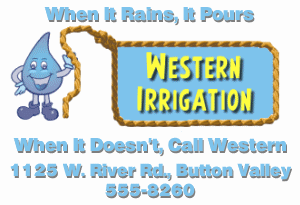Don’t strain your neurons, but think way back to when the legislature was in session. A bill (SB437) to slightly restrict the use of exempt groundwater wells was introduced. Exempt wells (<35gpm) don’t have to go through the regular well permitting process. This was a good idea way back when small homeowners used the wells for domestic water and there were few of them around. Now, exempt wells have become a real problem across the western states. Thousands of exempt wells are drilled every year in Montana and the potential exists that they will conflict with senior water rights or take water from streams.
Here is a good article that illustrates problems other states are facing from exempt wells. The small town of Roslyn, Washington has been forced to restrict or stop providing water to it’s residents during dry times while developments outside of town, using exempt wells, continue to water their lawns and flush their toilets with impunity. “Every Western state except Utah has some version of Washington’s domestic well exemption.” Some areas are seeing heavy and increasing growth. In Montana, 30,000 exempt wells were drilled between 2000 and 2008. 70% of those wells were in the four fastest growing counties. A small well, pumping 35 gpm certainly won’t have much effect on other water users or streamflows, but 3,000 well drawing over a 100,000 gpm can have disastrous effects.
In Washington, they placed a limit on the number of homes that can be fed from a single exempt well. Good idea, but it didn’t take developers long to figure out that they could break large developments into smaller units and sidestep the law. Instead of one well servicing more units, they just drill more wells. Same effect as one big well requiring a permit, but no permits are needed. In most states, including Montana, nobody meters exempt wells, so we don’t even know how much they are actually pumping. And in most basins, we have no real data on groundwater-surface water interactions so we don’t know how they affect streams.
“We know by hydrologic principle that it’s a problem, but we can’t say this river is dry because of it,” says Laura Ziemer, director of Trout Unlimited’s Montana Water Project. “By the time you get to the point where you can conclusively measure it, it’s too late.”
SB437 was killed in the House committee by “propity rights” advocates after it sailed through the Senate 38-12. This bill was only a small step to regulate exempt wells in Montana, but the longer we put off doing something, the larger the problem is going to get. We don’t need to ban exempt wells, but with more than 3,000 of these wells being drilled each year, it’s time to put some realistic restrictions, such as metering, on them before it becomes “too late”.
Filed under: Ag Business, Button Valley News, Montana Environment, Montana News, Montana Politics, Water | Tagged: Water, water quality |






It’ll be interesting to see how the HB52 process works out. And to see what happens at the January meeting of the Water Policy Committee.
You bet. Thanks Charley. I encourage folks to take a look at the results of the Sept. meeting. Some good stuff there like the updated water quality regulations and the overview of water law in Montana and the West.